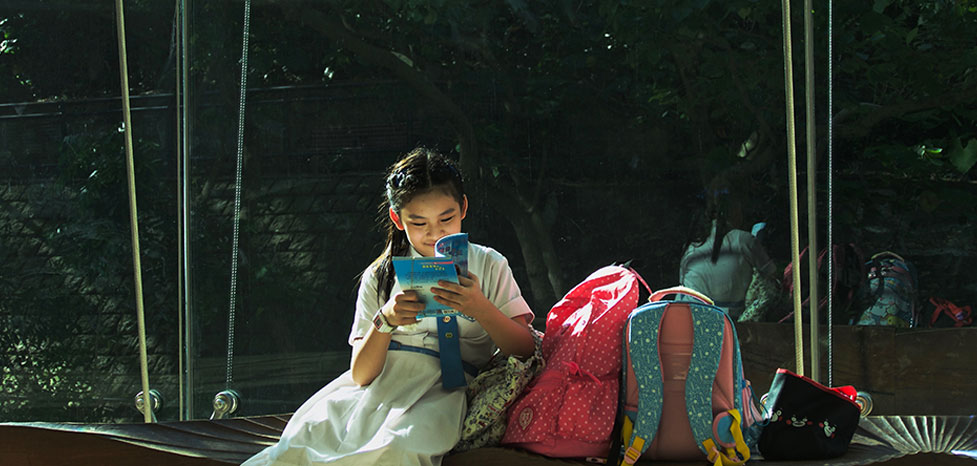Did it ever occur to you how different Snow White might be if she were say, African? Or if Harry Potter was a wizard from New Delhi? Or if Frodo Baggins was an Irish traveller?
A new report by CLPE (Centre for Literacy in Primary Education) in the UK shows that only 1% of black or ethnic minorities are reflected in children’s books, despite the fact that one third of school going children there are non-white.
A report from a few years ago said that not only should stories reflect the number of minorities but the quality of such, according to Farrah Serroukk who is directing the CLPE project. It is not about making young Zhang Wei show us how to work in the paddy fields but how about young Zhang Wei may be working in a playcentre in say Brighton, or a music shop in New Orleans or New York?.

From the children in the ‘Lemony Snicket’ books, to Greg in ‘The Wimpy Kid’ books, a majority of children feature white, probably middle class and usually western kids. Poverty is romanticised and used as a major plot device and linked to values of virtue; the poor Charlie who came good and earned a chocolate factory. Even the picture books reflect western concerns and values. Ok, it may be a story about a frog or a bear, but he probably lives in a semi-detached house in a village that could be anywhere in Dublin or Devon and educated at an English or American school. Eats honey, maybe marmalade on white bread. No kimchi or rice, no plum and ginseng lollipops from China or biryani cooked by the mammy bear, mammy rabbit or mother goose.
That being said, a few notable books in last few years have surfaced that have tried to include stories from different places around the world. One such book, very popular and jumped upon by pre-schools and primary schools alike, is ‘Handa’s Surprise’. It features an African girl who attempts to bring a number of fruits to her friend Akeyo, holding them on a basket on her head from the naughty animals of the African plains who keep stealing them.
Another notable one of late is by Chelsea Clinton called ‘She Persisted’. It plays the well-worn Clinton line of inclusiveness, liberalism and feminism. This makes the book seem quite contrived and perhaps a cynical attempt to say, ‘Hey liberal people of Twitter! We are including women of colour and telling you how wonderful they are but hey, let’s ignore that race elephant in the room!’
Do children living and going to school in Seattle, Cork or Manchester feel the culture and heritage in the way the way their migrant parents did growing up in Africa, Poland or China? Usually the books about minorities don’t serve the ‘minority living in a new place’ narrative very well. Handa held a basket on her head to carry fruit across the African plains, but what if Handa held an iPad or a hockey stick in a London grammar school? Many Irish legends, like ‘Cuchulainn’ and the ‘Salmon of Knowledge’, hold huge significance for Irish people but we don’t fully identify with them – we are not hurling huge wolves and eating salmon from a river! – yet it is important to have them in the literacy canon of our minds. Other stories, like the Hans Christian Anderson and Grimm brothers, are part of our collective consciousness and most people can’t remember how we know the stories but we do but our lives as such don’t reflect the woods setting or concern of the people in those stories. Hey, when was the last time you met a woodcutter?
Perhaps really it is the story we identify with and not the characters? Most stories it is said are universal? Boy meets girl or Amari meets Ashanti, whomever. Evil is evil, heroism is heroism in whatever form, colour or place is it set. Sadly, we like our heroes white, and male and probably educated.
Maybe it is the publishing companies who are the real evil stepmothers here? They go for what sells. In the same way that the stories of Hollywood movies are sanitised and westernised (I can’t wait for the Hollywood movie next year with probably Tom Hanks and 12 American white boys to tell the story of the recent Thailand cave rescue mission!). Maybe all our stories are ‘cleaned and whitened’ through the Hollywood-ready machine. They may have little interest in being inclusive but perhaps a good story is revered above all else right? favouring the white, peevish starving child with probably perfectly annunciated vowels, akin to ‘Please Sir, can I’ve some more!’. Not to mention the other questionable conventions in children’s stories – evil people are almost always older, childless or very clever. Mothers are always kind, loving or probably dead and spoken about in the past tense. Wealth and money are equated with evil and the values of greed. The world of love in childrens book is a heterosexual one. So the story of Leo, a gay son of an Indian immigrant who becomes the most powerful man in Ireland, is unlikely to be found in the children’s book section anytime soon.












